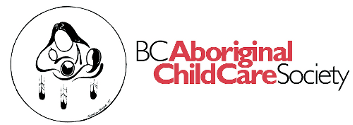"An altogether different approach" Jessica Ball, Marlene Lewis [electronic resource] : roles of speech-language pathologists in supporting Indigenous children's language development
Material type: ArticlePublication details: 2011Description: 1 online resource (p. 144-158) : digital, PDF fileSubject(s): Children -- Language | Language acquisition | Child developmentOnline resources: Full text
In:
Canadian Journal of Speech-Language Pathology & Audiology Vol. 35, no. 2 (2011), p. 144-158Abstract: Indigenous children are a rapidly growing population that has unmet needs for programmatic supports to ensure optimal language development outcomes and for assessment and intervention to address speech and language delays and disorders. Seventy members of the Canadian Association of Speech-Language Pathologists and Audiologists who had at least two years of practice experience with young First Nations and/or Inuit children completed an original questionnaire asking for their perspectives on the relevance and utility of their professional preparation, goals, tools, and funding for meeting the needs of young Indigenous children. Among respondents, 79% (n=55) called for "an altogether different approach." Statistical analyses of quantitative data showed almost complete agreement among speech-language pathologists (SLPs) on rated items. They uniformly emphasized, for example, an urgent need for repeat screening of Indigenous children from birth through age five, and the perceived importance of creating new screening tools specifically for Indigenous children. This article focuses on content analyses of S-LPs responses to open-ended questions in which they expanded upon their ratings, explaining their views of the need for distinctive areas of emphasis when S-LPs work with Indigenous children. Respondents identified the need for greater investments in community-based, capacity-building activities compared to individual-focused clinical treatment, and greater use of observation, criterion-referenced and dynamic assessment methods and language facilitation strategies that are customized with reference to the child's home language environment. They emphasized understanding the cultural context of practice, building and calling upon collaborative relationships with family and community members, and situating practice within infant and child development programs that facilitate culturally congruent communication skills of all children and caregivers in a family or community.
ArticlePublication details: 2011Description: 1 online resource (p. 144-158) : digital, PDF fileSubject(s): Children -- Language | Language acquisition | Child developmentOnline resources: Full text
In:
Canadian Journal of Speech-Language Pathology & Audiology Vol. 35, no. 2 (2011), p. 144-158Abstract: Indigenous children are a rapidly growing population that has unmet needs for programmatic supports to ensure optimal language development outcomes and for assessment and intervention to address speech and language delays and disorders. Seventy members of the Canadian Association of Speech-Language Pathologists and Audiologists who had at least two years of practice experience with young First Nations and/or Inuit children completed an original questionnaire asking for their perspectives on the relevance and utility of their professional preparation, goals, tools, and funding for meeting the needs of young Indigenous children. Among respondents, 79% (n=55) called for "an altogether different approach." Statistical analyses of quantitative data showed almost complete agreement among speech-language pathologists (SLPs) on rated items. They uniformly emphasized, for example, an urgent need for repeat screening of Indigenous children from birth through age five, and the perceived importance of creating new screening tools specifically for Indigenous children. This article focuses on content analyses of S-LPs responses to open-ended questions in which they expanded upon their ratings, explaining their views of the need for distinctive areas of emphasis when S-LPs work with Indigenous children. Respondents identified the need for greater investments in community-based, capacity-building activities compared to individual-focused clinical treatment, and greater use of observation, criterion-referenced and dynamic assessment methods and language facilitation strategies that are customized with reference to the child's home language environment. They emphasized understanding the cultural context of practice, building and calling upon collaborative relationships with family and community members, and situating practice within infant and child development programs that facilitate culturally congruent communication skills of all children and caregivers in a family or community.
Indigenous children are a rapidly growing population that has unmet needs for programmatic supports to ensure optimal language development outcomes and for assessment and intervention to address speech and language delays and disorders. Seventy members of the Canadian Association of Speech-Language Pathologists and Audiologists who had at least two years of practice experience with young First Nations and/or Inuit children completed an original questionnaire asking for their perspectives on the relevance and utility of their professional preparation, goals, tools, and funding for meeting the needs of young Indigenous children. Among respondents, 79% (n=55) called for "an altogether different approach." Statistical analyses of quantitative data showed almost complete agreement among speech-language pathologists (SLPs) on rated items. They uniformly emphasized, for example, an urgent need for repeat screening of Indigenous children from birth through age five, and the perceived importance of creating new screening tools specifically for Indigenous children. This article focuses on content analyses of S-LPs responses to open-ended questions in which they expanded upon their ratings, explaining their views of the need for distinctive areas of emphasis when S-LPs work with Indigenous children. Respondents identified the need for greater investments in community-based, capacity-building activities compared to individual-focused clinical treatment, and greater use of observation, criterion-referenced and dynamic assessment methods and language facilitation strategies that are customized with reference to the child's home language environment. They emphasized understanding the cultural context of practice, building and calling upon collaborative relationships with family and community members, and situating practice within infant and child development programs that facilitate culturally congruent communication skills of all children and caregivers in a family or community.

There are no comments on this title.